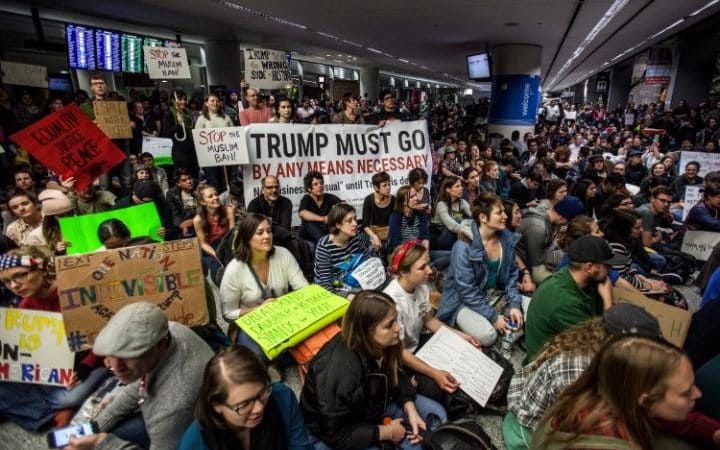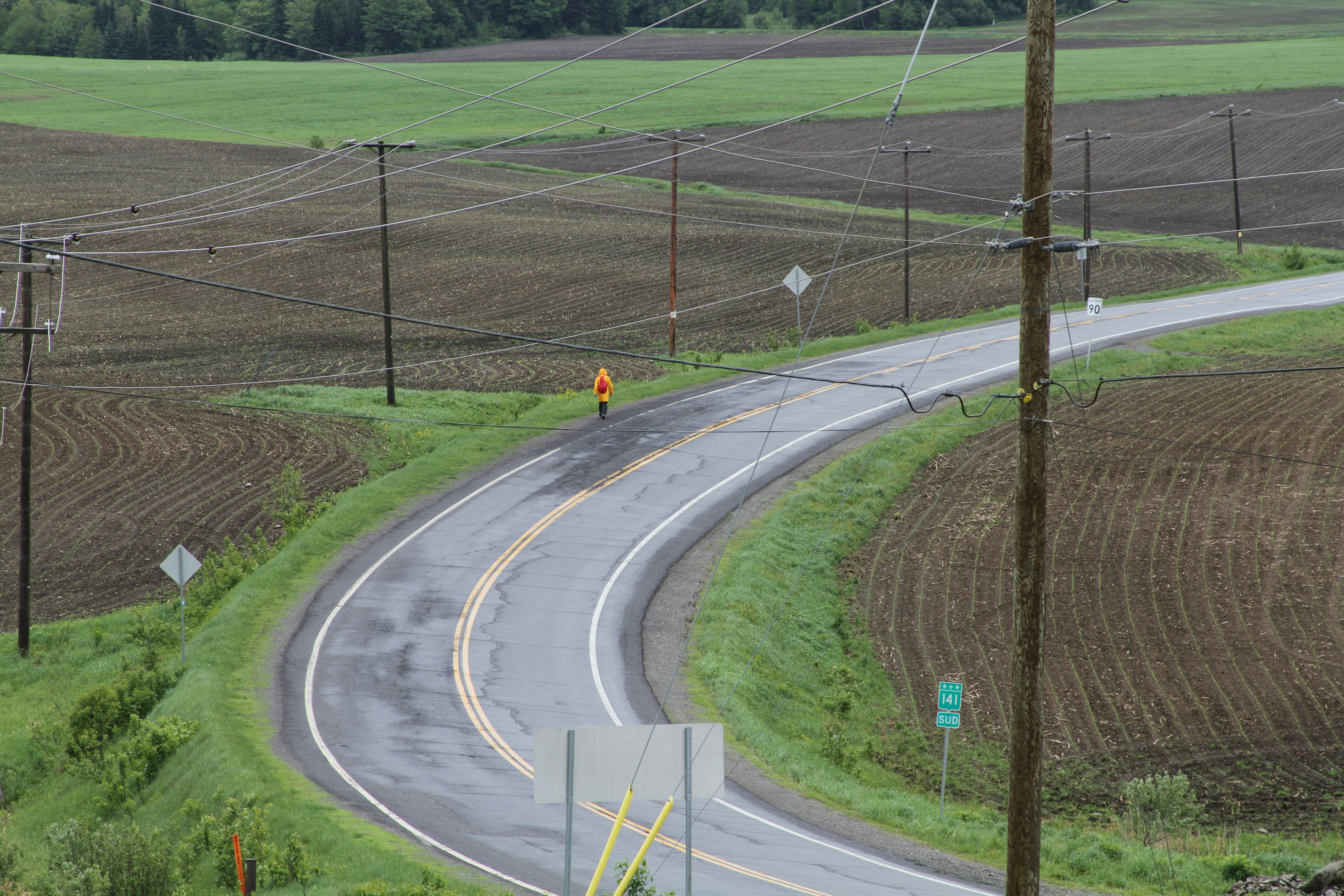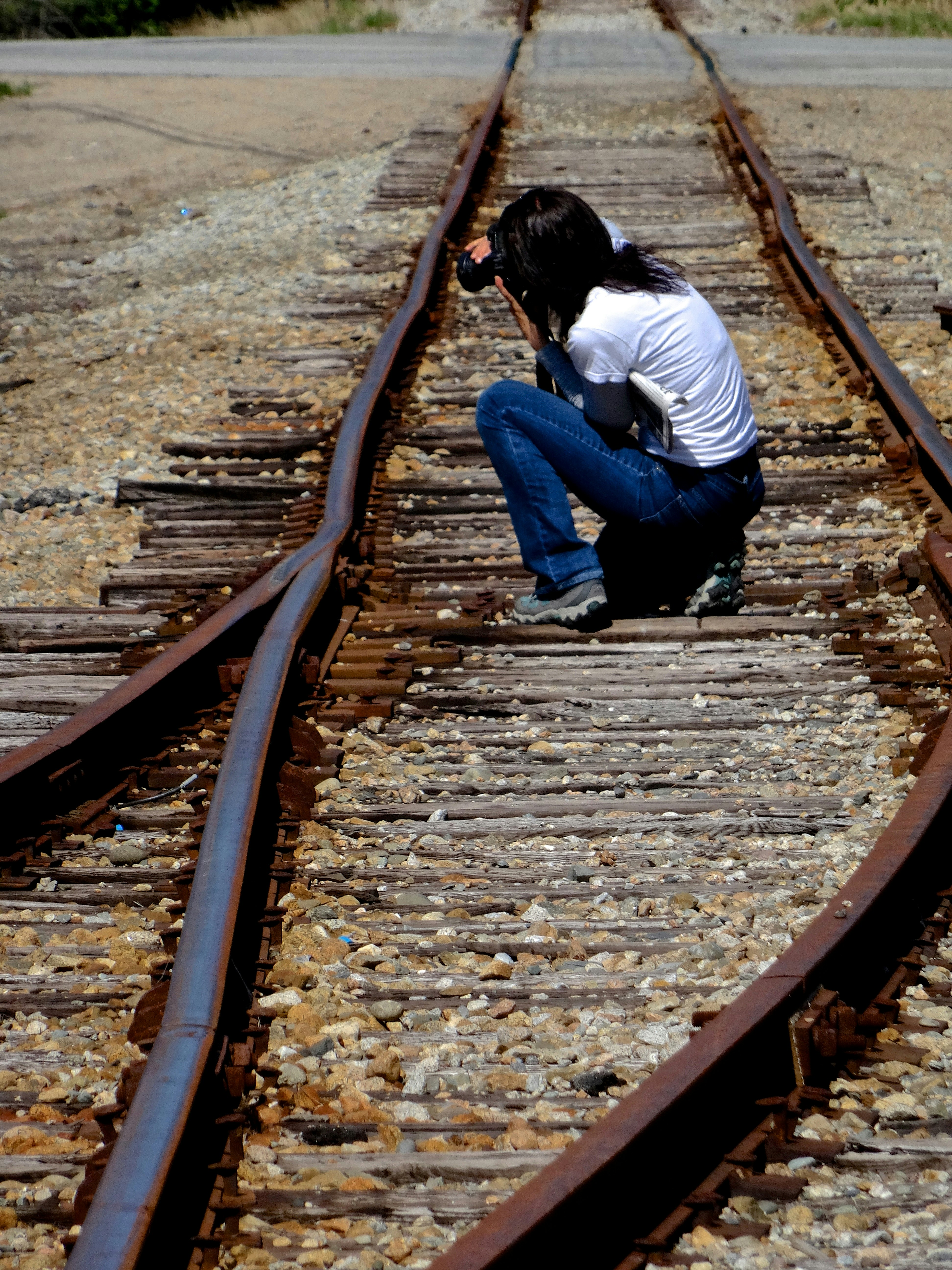(Im)mobility
Mobility implies the ability – some say the essential human right – to move freely. But the global migration crisis reminds the world that not every subject can exercise that freedom due to their race, gender, sexuality, class, political persuasions, or national identity. Hence certain citizens of a country enter it with minimal restriction, while others and non-citizens are impeded or halted altogether. In the United States, press coverage of restrictions on mobility has increased in the wake of the executive orders in 2017 targeting people from certain predominantly Muslim countries. Refugees, asylum seekers, and even some people with proof of permanent residency in the US (green card holders) have been stopped at the American border and refused entry. Others already on American soil have become immobile, fearing that travel could lead to their exclusion from the US. Both groups lack what anthropologist Bartholomew Dean has called the “freedom of mobility” – that is, the “right to stay put, to leave, and to return.”
Let’s explore the photographic dimensions of that freedom and its denial, beginning with its most recent forms. When the first executive order travel ban was issued in January 2017, protests erupted across the country, especially at international airports. Pictures of people crying and hugging loved ones convey the mixture of fear, relief, and frustration experienced by those temporarily detained and denied their freedom. Other photos of protestors show them filling airport arrival halls, equipped with signs decrying the treatment of Muslim travelers. Their choice to remain fixed in place, as border police immobilize others just yards away, reminds everyone that the freedom of mobility must be defended.
 Protestors at San Francisco airport’s arrival lounge, The Telegraph, January 29, 2017. Credit: Peter Dasilva/EPA
Protestors at San Francisco airport’s arrival lounge, The Telegraph, January 29, 2017. Credit: Peter Dasilva/EPAIn the American documentary tradition, several celebrated explorations of mobility spring to mind: portraits taken by Lewis Wickes Hine at the Ellis Island Immigration Station in New York (1904–09, 1926), the photographs of Midwestern America commissioned by the US Farm Security Administration (1935–44), and Robert Frank’s journey across the country that resulted in The Americans (1958). In these examples, photographers undertook migrations of their own to create photographic records of migration from, to, and within the United States. The freedom of mobility, in other words, was represented from the perspective of a camera operator on the move. The operator could choose to picture that freedom as unfettered or restricted – by poverty, government regulations, or the sheer numbers of people seeking to exercise it all at once.
 Lewis Wickes Hine, Climbing into America, Immigrants at Ellis Island, 1904, gelatin silver print. The Miriam and Ira D. Wallach Division of Art, Prints and Photographs: Photography Collection, The New York Public Library. New York Public Library Digital Collections
Lewis Wickes Hine, Climbing into America, Immigrants at Ellis Island, 1904, gelatin silver print. The Miriam and Ira D. Wallach Division of Art, Prints and Photographs: Photography Collection, The New York Public Library. New York Public Library Digital CollectionsToday when Americans think of Ellis Island they imagine a place that welcomed over 12 million people to the United States. As the nation’s busiest immigration inspection station between 1892 and 1954, it has become an emblem of migration and mobility. This view of Ellis Island has shaped readings of Hine’s famous photographs of the eastern, central, and southern European immigrants who moved through the station. Climbing into America, for instance, has been read as full of movement; men and women mount stairs, waving sheets of paper. Yet we can just as easily read the Ellis Island pictures by Hine as meditations on the immobility associated with migration. After all, the subjects in Climbing into America are standing still, weighed down by their belongings. Several figures lock viewers in their gaze, fixed (and fixing us) in place. Throughout Hine’s series, immigrants are stuck in waiting rooms and unmoving lines; many appear in closely cropped portraits or penned in by solid walls or chain links. Arrival in the United States for these new immigrants was not the moment of pure happiness and opportunity it is often assumed to be; it was an experience marked by uncertainty, bureaucracy, and frequent setbacks.
 Lewis Wickes Hine, A Group of Italians in the Railroad Waiting Room, Ellis Island, 1905, 1905, gelatin silver print. The Miriam and Ira D. Wallach Division of Art, Prints and Photographs: Photography Collection, The New York Public Library. New York Public Library Digital Collections
Lewis Wickes Hine, A Group of Italians in the Railroad Waiting Room, Ellis Island, 1905, 1905, gelatin silver print. The Miriam and Ira D. Wallach Division of Art, Prints and Photographs: Photography Collection, The New York Public Library. New York Public Library Digital CollectionsLast week the interconnectedness of mobility and immobility was brought home to me at a preview screening of a documentary by Maine filmmaker Tonya Shevenell. The Home Road tells the story of Shevenell’s great-great-great-grandfather Israel, who migrated by foot in 1845 from rural Compton, Québec, Canada to the city of Biddeford, Maine, USA. The nineteen-year-old, French-speaking Canadian found work as a brickmaker in Biddeford, and became the area’s first permanent Franco-American settler. In 2015, the filmmaker’s father Ray retraced the incredible 188-mile journey of their ancestor, walking for nearly two weeks. Tonya Shevenell’s camera was there every step of the way. In the documentary, still and moving images are interspersed with historical artifacts from Québec and Maine, including postcards and photographs that traveled between the two homes of the Shevenell family.
The Home Road is an inspiring and beautifully constructed local migration story. What it does particularly well is convey to audiences how necessary and challenging geographic mobility was between Canada and the United States. Israel Shevenell set off from Compton in 1845 because he needed a better job and economic prospects for his family. The family archive suggests that he took no photographs en route to Biddeford. The film makes up for that absence by incorporating numerous photographs taken by Tonya, Ray, and friends who followed his trek. Through those pictures we can envision what Israel’s journey might have been like: picturesque and productive in one moment, sublime and harrowing in the next.
Some choose to see the representation of human mobility through an immobile frame as an insurmountable challenge. Tonya Shevenell, however, takes it as an opportunity to demonstrate that every migration comes with moments of immobility, just as Lewis Hine once did. A mere ten miles into his trek from Compton, then 74-year-old Ray developed painful foot blisters that required tending, a brief hospitalization, and innovative solutions throughout the trip. We see his bloody, bandaged feet in several still camera shots. Further conspiring to slow Ray down were treacherous, narrow roads and the unpredictable New England weather, all captured in still photographs. There are even several points in The Home Road when we experience Ray and Tonya moving backwards, their forward mobility thwarted by miscommunication. One morning Ray sets off on foot, heading south from Compton toward the US-Canadian border. In his pocket are the keys to the car that Tonya had been using to follow her father’s progress. She runs toward the border, he hitches a ride on a tractor-trailer, and they finally meet, only to begin again in opposite directions.
But are the moments of immobility in the film merely setbacks and evidence of inertia? Are they not also moments of active reflection and becoming? French philosopher Henri Bergson offers the following argument:
[I]f we really take seriously the proposition that everything is in movement, that everything changes, then there is no immobility. What we call immobility is a composite – a relation between movements.
For Bergson, it is in the points between movements that we exercise our intellect, gain perspective on the relations between them, and bring the moving world into focus. The Home Road embraces this view of immobility, using photos of the trek as points of reflection on where we come from, where we are, and where we’re going. Shevenell thus demonstrates the rich potential of juxtaposing immobile and mobile images in retelling a migration story.
Ultimately, The Home Road is a story about the freedom of mobility for middle-class Franco-Americans, nearly two centuries after their arrival in the United States. The Shevenells, after all, chose to retrace the voluntary migration of their now celebrated ancestor, whose name graces a public park in Biddeford. And they did so without challenges to their political rights to make the journey. Ray, in fact, notes the relative ease with which he walked across the US-Canadian border in his orange slicker and with his US passport, approaching the border station “like a car.” Photographs taken of Ray on either side of his crossing – his face smiling and strides relaxed – reinforce that view.
The next and final post will consider very different negotiations of the border, undertaken by migrating subjects whose mobility and political status are precarious at best. My discussion of photographic projects recently created along the northern and southern boundaries of the United States will bring us back to where this series began – to the figure of the refugee.

